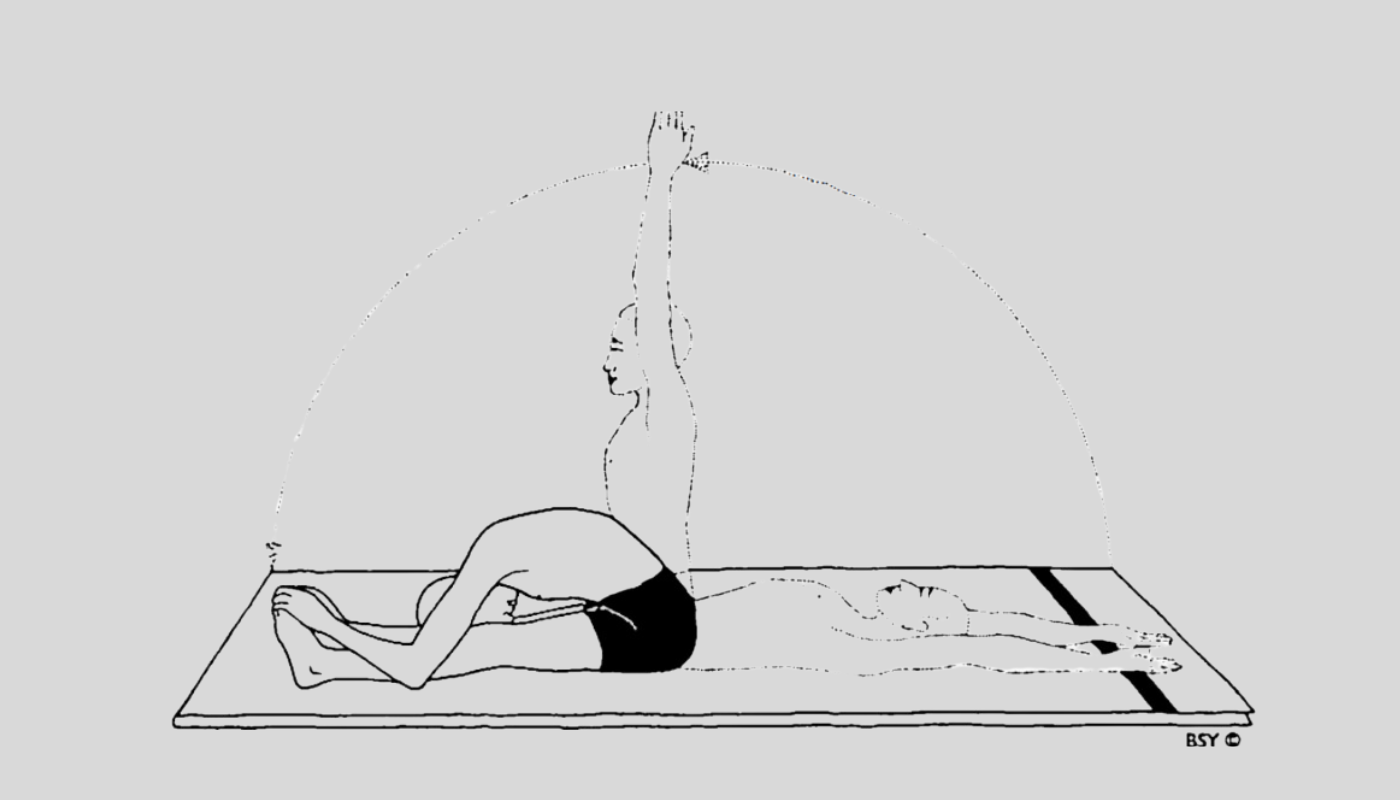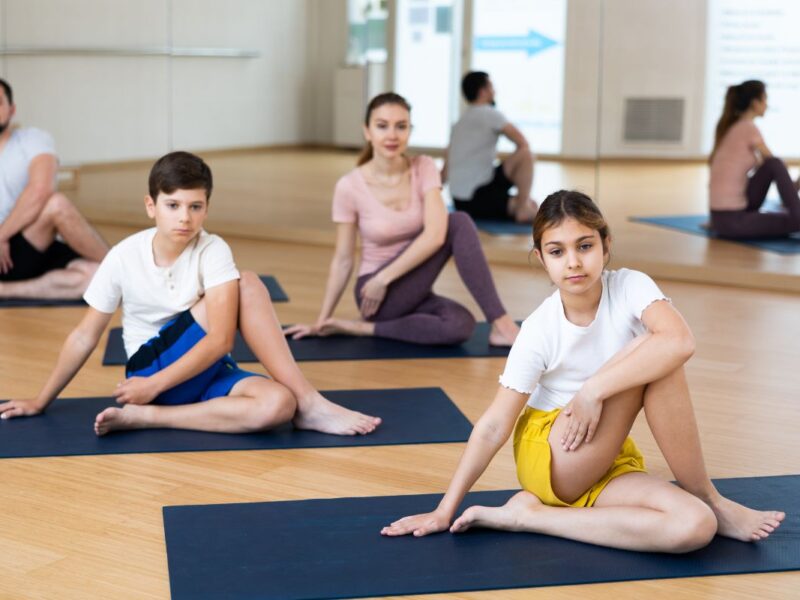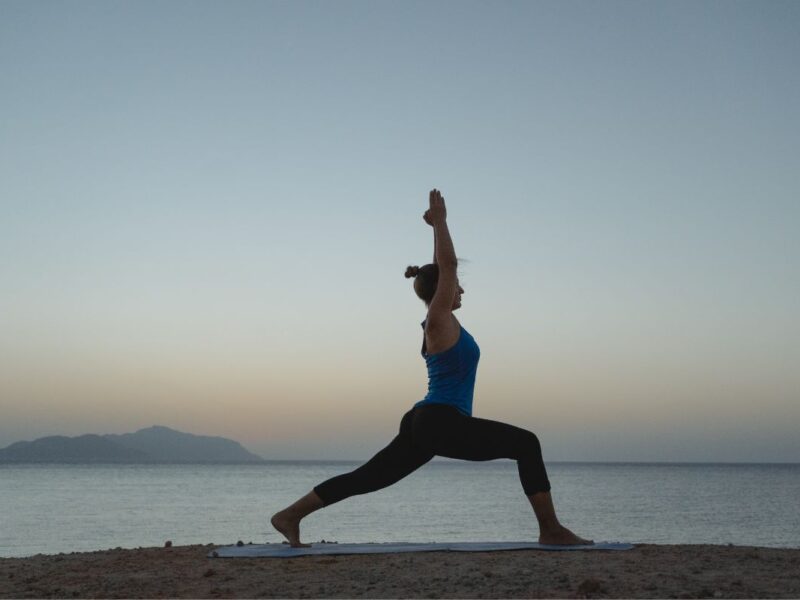Gatyatmak Paschimottanasana derives its name from Sanskrit, where “Gatyatmak” means dynamic, “Paschim” means west or back of the body, and “Uttana” means intense stretch. Gatyatmak Paschimottanasana, also known as the dynamic back stretch pose, is a variation of Paschimottanasana (Seated Forward Bend). The pose has its roots in Hatha Yoga and is believed to have been practiced for centuries as a way to enhance physical flexibility, promote relaxation, and stimulate energy flow throughout the body. It holds significance in yoga practices for its dynamic nature, which aids in improving overall well-being. In this pose, practitioners lie flat on their backs with feet together, raising their arms over the head and bringing them to the floor with palms facing up. The pose involves a smooth movement of bending forward into Paschimottanasana while synchronizing breath with movement. This dynamic practice enhances circulation, metabolic processes, and flexibility while stimulating physical and pranic energy.
Join: Yoga Teacher Training in Rishikesh
Practice Instructions:
- Lie flat on the back with feet together.
- Raise arms over the head and bring them to the floor with palms facing up.
- Relax the whole body.
- Raise the trunk to the sitting position with arms straight above the head and spine straight.
- Bend forward into Paschimottanasana smoothly.
- Hold the final position briefly.
- Return to the sitting position with arms straight above the head.
- Lean backwards and return to the starting position.
- Practice up to 10 rounds.
Breathing:
- Breathe normally in the starting position.
- Inhale while coming into the sitting position.
- Exhale while bending forward into Paschimottanasana.
- Inhale while sitting up.
- Exhale while returning to the starting position.
Awareness:
- Physical awareness: Synchronize movement with breath.
- Spiritual awareness: Focus on Swadhisthana Chakra.
Contraindications:
Similar to Paschimottanasana.
Benefits:
- Enhances circulation and metabolic processes.
- Increases flexibility and stimulates physical and pranic energy.
- Offers benefits similar to Paschimottanasana, albeit at a reduced level.
Learn to know more about yoga poses so you can join 100 hour yoga teacher training in rishikesh and 200 hour yoga teacher training in rishikesh and 300 hour yoga teacher training in rishikesh



